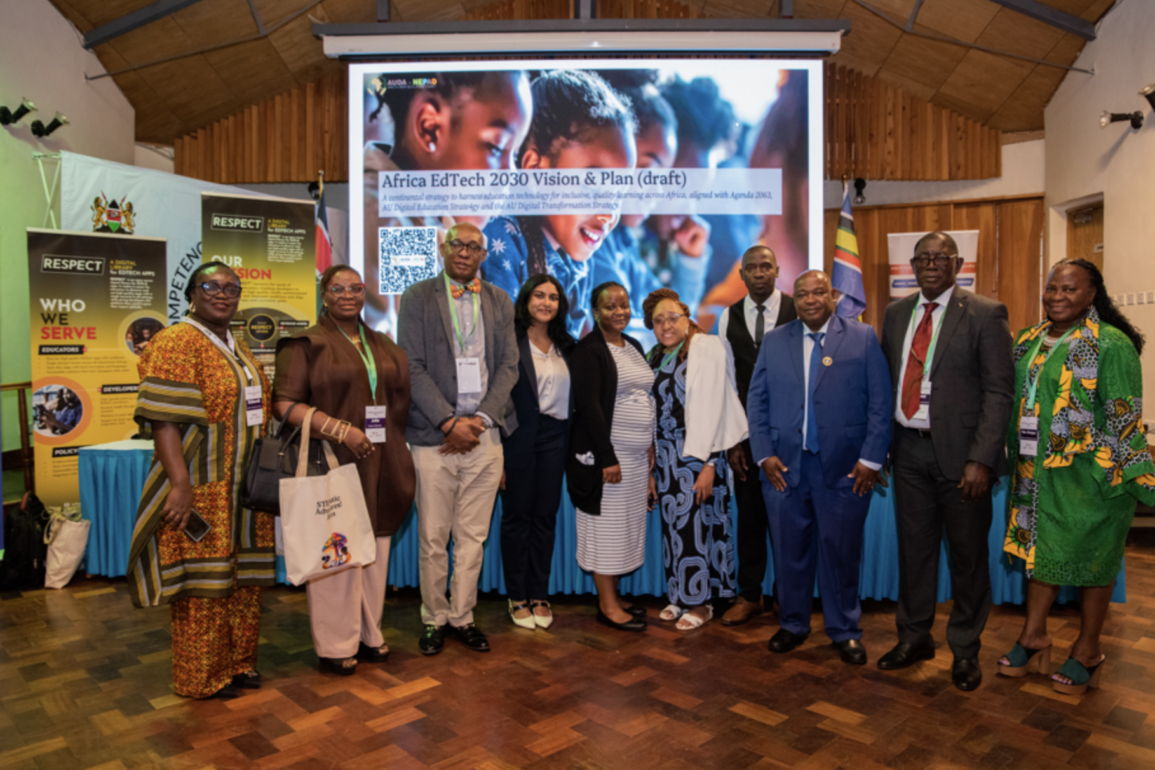The African Union Development Agency-NEPAD (AUDA-NEPAD) has launched the draft African EdTech 2030: Vision, Plan and Policy Framework, inviting public consultation and stakeholder input on a strategic roadmap aiming to revolutionize education across the continent through technology.
Unveiled at the STEMtastic Adventures! Africa symposium, the ambitious framework outlines a vision to position Africa as a global leader in mobile-first, locally relevant digital learning, aligned with key continental initiatives including Agenda 2063, STISA-2034, CESA 2026-2035, and the AU Digital Transformation Strategy.
“The draft vision, plan and policy framework aim to catalyse an accelerated transformation in education for the continent: leveraging local innovation and leadership in EdTech to make Africa’s education systems more inclusive, resilient and innovation-driven, as envisaged by Agenda 2063 and the AU Digital Education Strategy,” said Dr. Barbara Glover, Program Officer, Integrated Vector Management Programme (IVM) at AUDA-NEPAD.
The framework leverages Africa’s unique opportunity to leapfrog traditional education infrastructure limitations — similar to how mobile money adoption outpaced other regions due to a lack of conventional banking systems. Developers emphasize how offline and mobile-first technologies can extend learning to marginalized communities, with solutions designed for intermittent connectivity and basic smartphones offering potential global applications.
With smartphone ownership among teachers exceeding 90% in South Africa and ranging between 30% and 65% in Ghana, Nigeria, and Kenya, the continent is well-positioned to adopt mobile-first digital education.
The 2030 vision sets forth an inclusive goal: “Every African learner—regardless of gender, location, disability or background—has affordable access to high-quality, localised digital learning resources on reliable devices, within an inclusive ecosystem that fosters innovation and entrepreneurship.”
Practically, this means a rural student in Tanzania accessing high-quality lessons in Kiswahili on offline-enabled devices, while educators across the continent share resources seamlessly. The policy framework envisions interoperable courseware, with data remaining secure nationally but contributing to broader continental insights.
The initiative seeks to address pressing challenges: with over 60% of Africa’s population under 25 and projected to reach 2.5 billion by 2050, education access and quality are critical. Yet, an estimated 30 million primary-age children remain out of school in Sub-Saharan Africa, and the continent will need 17 million additional teachers by 2030 to maintain universal education.
Only about 40% of African primary schools have internet access, while UNICEF reports nearly 75% of youth lack digital skills demanded by modern economies. The COVID-19 pandemic exposed these gaps starkly when many countries struggled to transition to remote learning.
John Kimotho, a senior figure involved in the initiative, said, “It is time for a Pan‑African EdTech transformation: one that turns connectivity and content investments into improved learning, inclusion, and economic opportunity for every learner.”
The vision and plan are anchored in six strategic objectives: expanding access and infrastructure through affordable devices, solar-powered solutions, and offline-first technologies; advancing courseware development with a focus on locally developed, curriculum-aligned, multilingual content—exemplified by Senegal’s Wolof-language XamXam platform, which now reaches 1.2 million users; building teacher capacity in digital pedagogy, content curation, and data use; institutionalizing interoperability and standards via vendor-neutral policies and technical frameworks; strengthening policy and governance through improved data privacy, equitable funding models, and regulatory harmonization; and driving data and research efforts to generate evidence that informs policy and tracks educational outcomes.
Implementation will happen in three phases: foundation building (2024–2026) to develop cross-border policies and standards; system integration (2026–2028) to scale interoperable Digital Public Infrastructure and regional courseware; and consolidation and export (2029–2030) to position Africa as a global EdTech exporter and launch an innovation hub.
This Digital Public Infrastructure approach means teachers will access educational tools through unified platforms, avoiding multiple passwords, while retaining local curriculum relevance.
The plan assigns clear roles for governments, regional bodies, development partners, the private sector, NGOs, and communities to ensure collective accountability.
Sustainability depends on blended finance models mixing grants, equity, and subsidies, alongside partnerships with organizations such as the Global Partnership for Education, UNICEF, and UNESCO.
AUDA-NEPAD’s goal is to coordinate a continental push: aligning open, vendor-neutral policies; investing in scalable digital infrastructure; enhancing educator capacity; fostering local innovation through incubation and financing; and using data-driven governance to improve equity and learning outcomes.
The draft African EdTech 2030: Vision & Plan calls on all stakeholders to review and contribute, aiming to build a transformative digital education ecosystem.
“Through coordinated policy, local innovation, and equitable infrastructure, Africa can leapfrog legacy education barriers and build a globally competitive digital learning ecosystem,” John Kimotho concluded. “By learning from frontrunners like Kenya, Rwanda, and Mauritius and sharing lessons across borders, Africa can lead a new era in global EdTech.”




